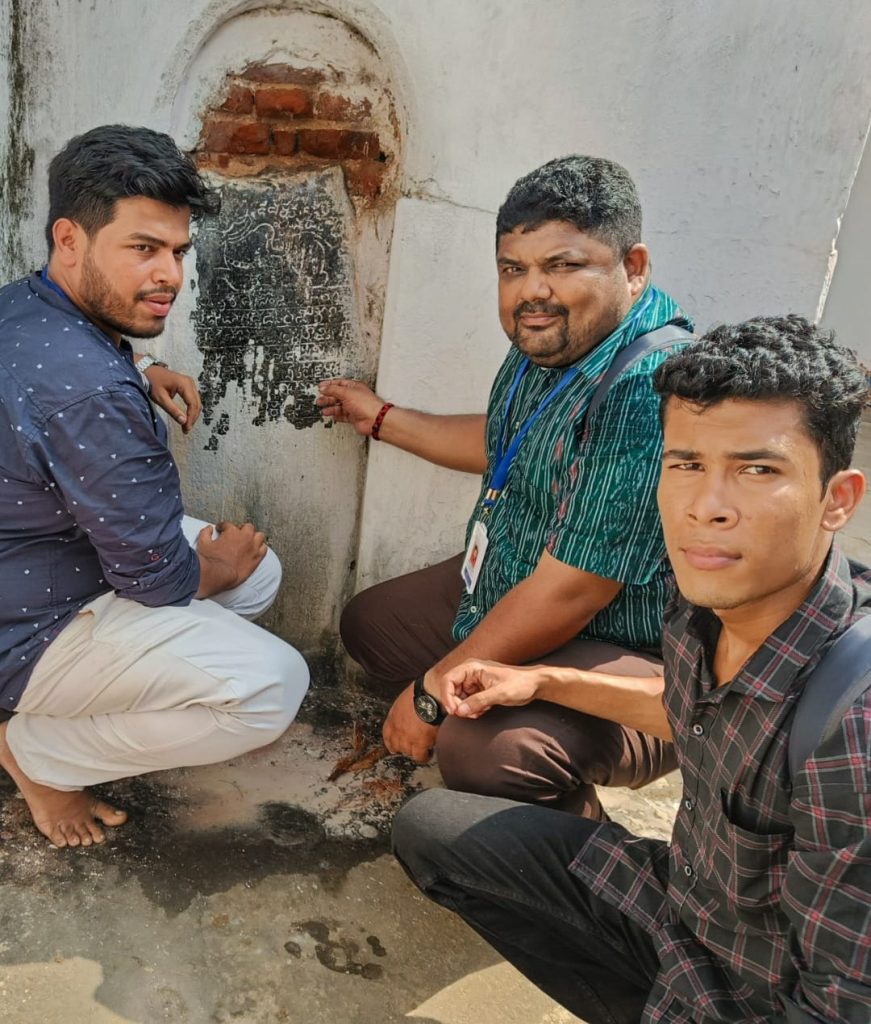ARINDAM GANGULY, OP
Bhubaneswar: Researchers from the Indian National Trust for Art and Cultural Heritage (INTACH) have recently uncovered a stone inscription dating back to nearly 827 years in Maduthuru village, located in Achutapuram mandal, Anakapalli district of Andhra Pradesh. The inscription was found as part of an initiative to list and document historic Kalingan sites in Andhra Pradesh, a project spearheaded by the Odisha state chapter of INTACH. This exploration was led by Deepak Kumar Nayak, project coordinator of INTACH, alongside member Suman Prakash Swain and epigraphist Bishnu Mohan Adhikari. Adhikari, who deciphered the inscription, explained that the text is carved on a stone panel affixed to the wall of the Chodeswara Shiva temple in Maduthuru village, written in Telugu language and script.
The inscription reveals that the temple was built by three brothers—Prolli Setti, Poti Setti, and Bhami Setti—who were the sons of Sittamma Setti. It also notes that land endowments were made to support the temple’s upkeep and to ensure the perpetual lighting of a lamp.
Also Read: Odisha govt prohibits employees from lobbying for suitable postings, transfers
The figure of a couchant bull, the royal insignia of the Eastern Ganga dynasty is found carved in the top portion of the inscribed stone panel. INTACH project coordinator Deepak Kumar Nayak stated that the grant mentioned in the inscription was issued in the first regnal year of King Rajaraja Deva III, around 1197-98 CE. Rajaraja III was the grandson of famous Eastern Ganga monarch, Anantavarman Chodaganga Deva. Notably, a copper grant of Rajaraja III discovered in Dashagoba village of Puri district, corroborates that the grand Jagannath temple of Puri was reconstructed by Chodaganga Deva.
